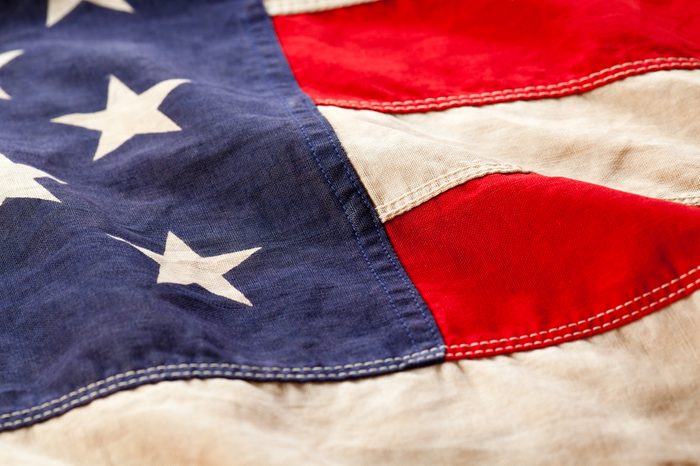
The 50-star flag was designed by a high-school kid
In 1958, 17-year-old Robert G. Heft was living with his grandparents in Ohio when he was given a school project to design a 50-star flag reflecting the addition of Alaska and Hawaii to the nation. Heft got a B- on his project… later upgraded to an A after President Eisenhower picked Heft’s flag design as the new banner of the nation.
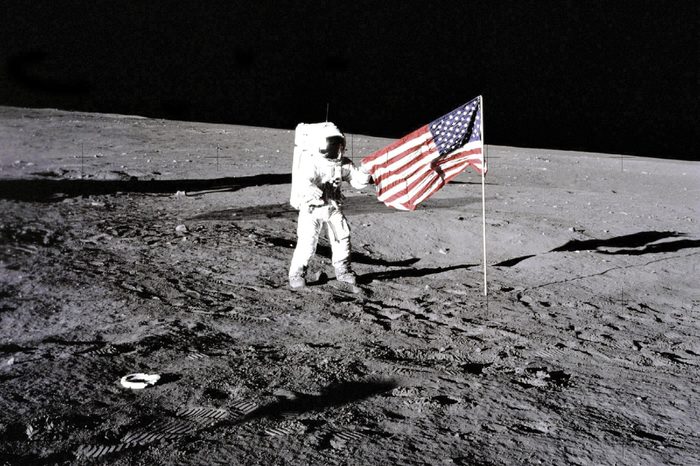
Our moon flags have all turned white
It’s hard to plan a vacation on the moon; with alternating 14-day spans of scorching 100°C heat followed by 14 days of pitch-black -150°C cold, there’s just no high season. Suppose now you are a $5.50 nylon American flag faced with this cruel climate (plus a constant bath of intense UV radiation) every day for 40-some years—what do you think you’ll look like? Bleach-white, according to lunar scientists who say the six U.S. flags planted on the Moon during the Apollo program would be unrecognizably faded today. We surrender!
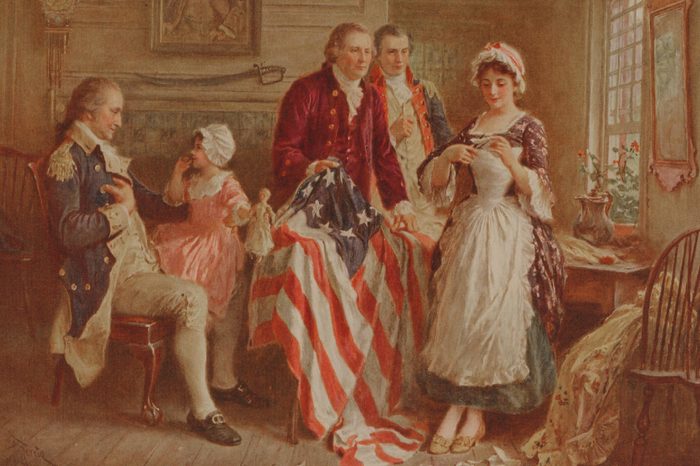
Betsy Ross may have nothing to do with the design
Philadelphia-born upholsterer Betsy Ross is given credit for sewing and designing the very first American flag, but there is no evidence that she had anything to do with it. Strangely, the first account of Ross’s flag-sewing legacy didn’t air until 1870, nearly a century after the flag debuted and long after Ross herself had died. The first person to tell the tale? Ross’s grandson. It is still not known whether her legend is true. Once you brush up on your 4th of July history, check out these 9 famous moments in history that actually never happened.
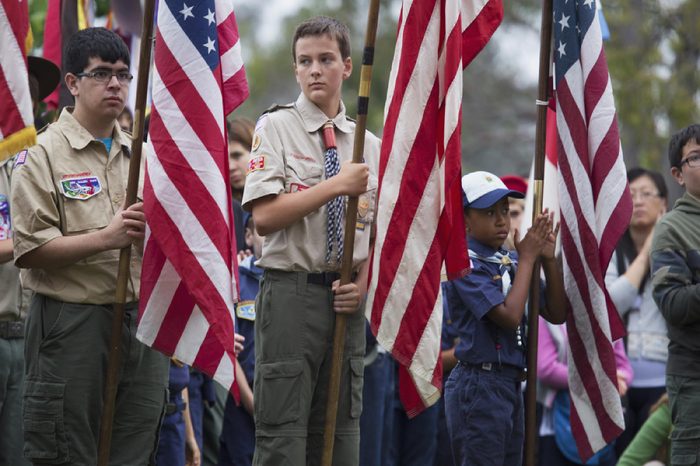
The world’s most prolific flag burners are children
Hit the snooze button on your outrage. According to the Unites States Flag Code, burning a flag is actually the preferred and most dignified method of retiring an old or damaged flag. The Veterans of Foreign Wars and American Legion conduct regular flag retirement ceremonies, but the world’s number one flag-burners? Probably the Boy Scouts and Girl Scouts of America, whose more than 4 million members conduct frequent Flag Retirement Ceremonies that are considered paragons of honor. For everyone else, here are some flag etiquette mistakes you might be making.
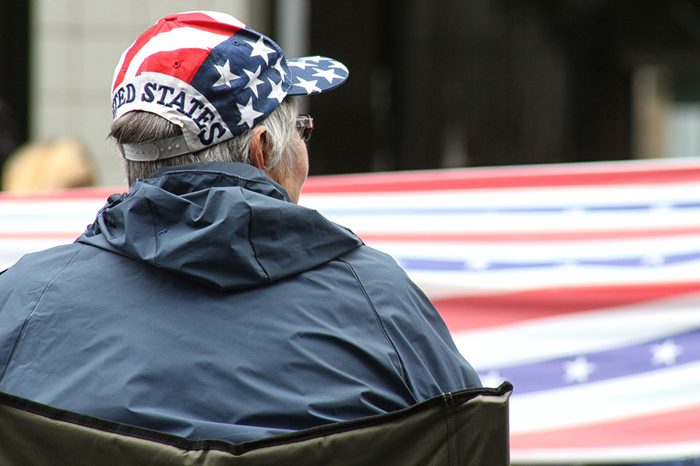
You’ve probably broken the flag code
If you’ve ever worn a piece of clothing with the American Flag on it, Uncle Sam wants a word with you. According to the official United States Flag Code, the stars and stripes should never be used for advertising purposes and should not be worn on apparel except by military personnel, firefighters, police officers, and members of patriotic organizations. Quick! Somebody warn Old Navy!
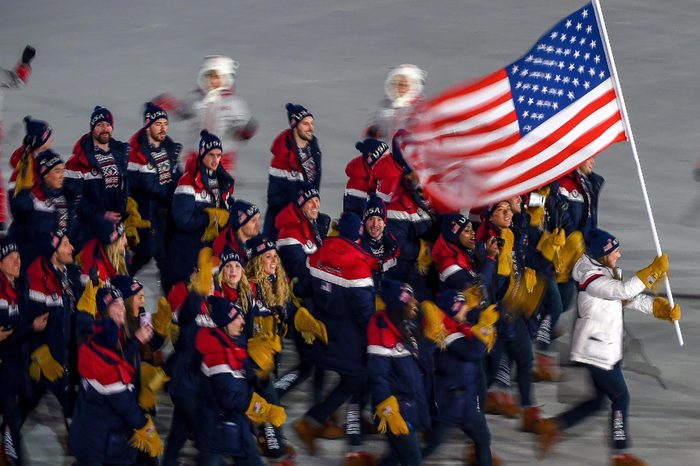
Our flag makes the Olympics awkward
Also in the Flag Code: a rule saying that our Stars and Stripes should never be dipped to any other person or thing. The next time you watch Olympic Games footage, you’ll see America is usually the only nation not to dip their flag when marching past heads of state. This move made things pretty awkward in 1908, when the Games were held in London and it was public protocol that each nation lower their flag and give three cheers when passing His Majesty, King Edward VII. American flag bearer Ralph Rose was the only athlete to refuse, keeping the flag erect as he passed. Here are more fascinating facts about America you never knew.
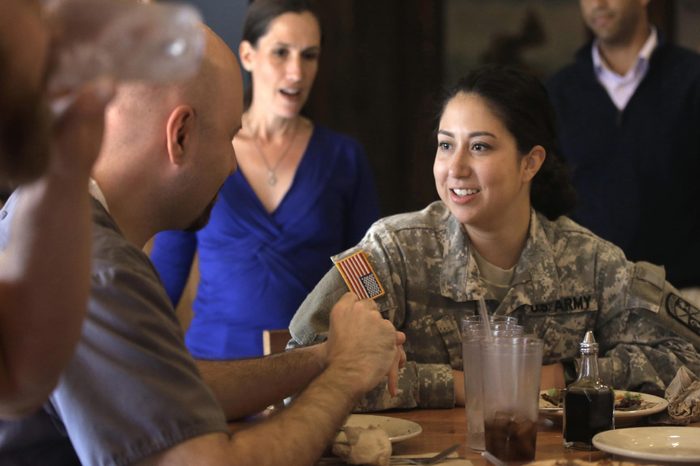
Military uniforms wear the flag backward (for an awesome reason)
If you’ve ever seen a Marine wearing a backward flag patch on his fatigues, it’s not because he put on his uniform inside-out. According to The Institute of Heraldry, flag patches on military uniforms should be worn with the star field always facing front to mimic a flag blowing in the wind as soldiers charge into battle. Awesome.
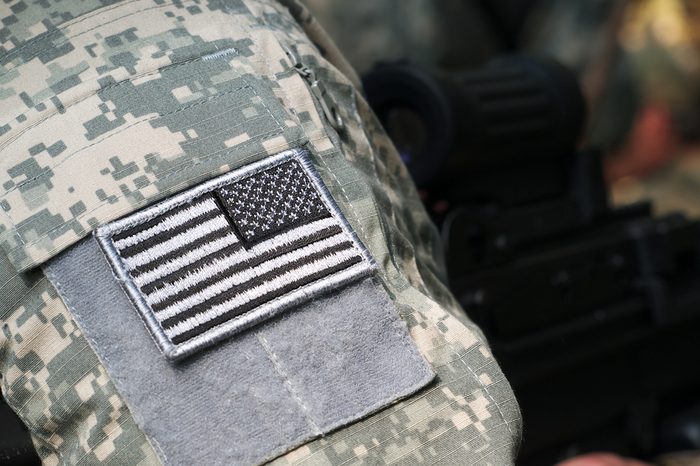
Military flag patches may also save lives
While deployed, many soldiers wear a subdued blue-gray version of the flag patch that is made of infrared light-emitting material. When viewed through night vision goggles, the flags glow in the dark—helping soldiers to identify friendly forces in the field. Awesome again.
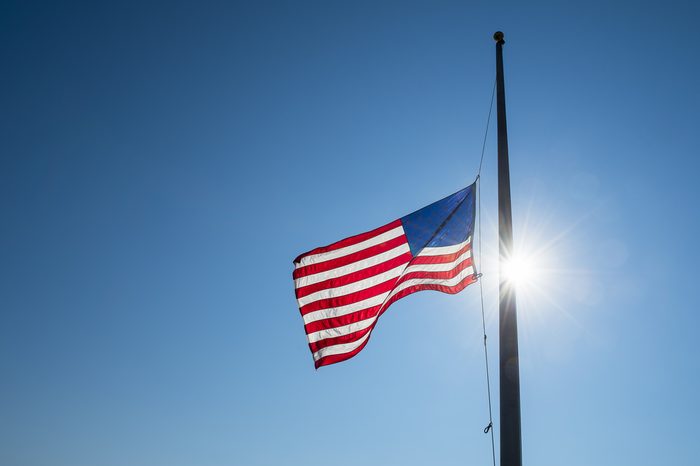
Half-mast flags have a dark secret
The tradition of flying flags at half-staff to show mourning and respect dates back at least to 1612, when the crew of a British vessel sailed home with the Union Jack at half-mast in honor of their dead captain. It has since become British tradition to fly a flag of mourning not halfway down the pole, but exactly one flag’s-width below its normal position. Why? To make room for another flag at the top of the staff: the invisible flag of death.
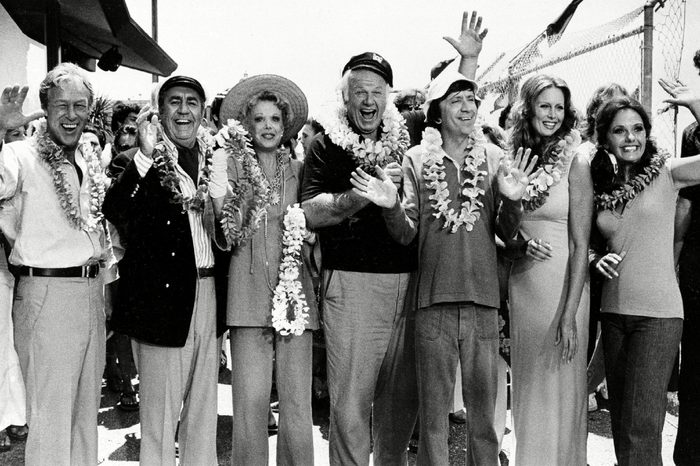
‘Gilligan’s Island’ hides a legendary half-mast flag
In the opening sequence of the first season of Gilligan’s Island, you’ll notice a flag flying at half-staff as The Minnow leaves the harbor, about 22 seconds in. Why? Because these shots from the pilot episode were filmed on November 22, 1963—the day President John F. Kennedy was assassinated.
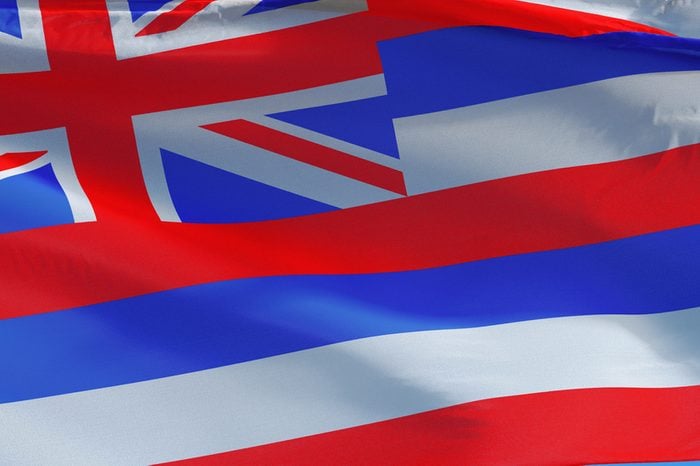
One state still flies a British flag (sort of)
More than two centuries after the Flag Act of 1777 banished Britain’s Union Jack from American flags, one state’s official flag still carries a shoutout to the king. Check out the Hawaiian flag: eight alternating red, white, and blue stripes (symbolizing the eight major islands of Hawaii) framing a Union jack in the top left corner. The history of the flag is uncertain, but likely stems from a friendly meeting between one of King George III’s envoys and Hawaii’s King Kamehameha in the 1790s, long before America annexed the islands 100 years later. Can you guess each U.S. state flag in this quiz?
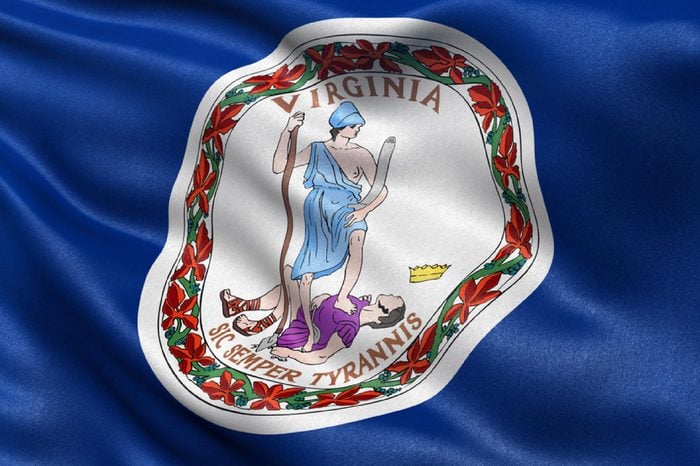
And the only state flag with nudity on it is…
Virginia. The state’s flag and seal show the Roman deity Virtus (the personification of bravery and military strength) standing triumphant above the crumpled king, Tyranny. The familiar Latin phrase “sic semper tyrannis” runs like a caption below the scene, proclaiming the same thing that non-Virginian actor John Wilkes Booth proclaimed after assassinating Abraham Lincoln: thus always to tyrants. For whatever reason, Virtus bares her left breast, making her the only depiction of nudity on an American flag. (Well, they do say Virginia is for lovers.)
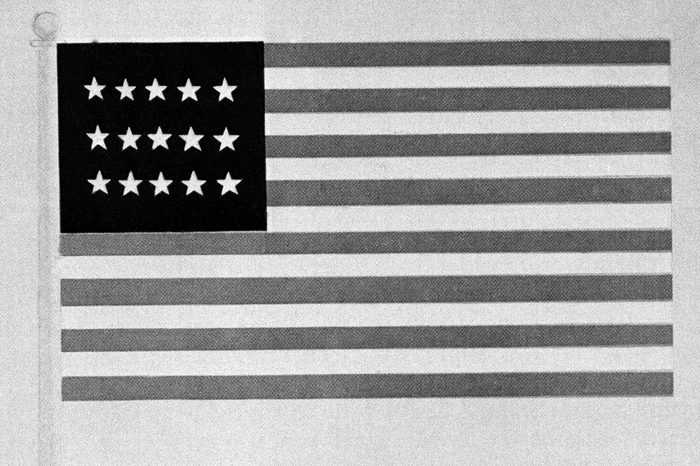
There could have been 50 stripes
Our first flag had 13 stripes for 13 states. So, what happened when two more joined the club? More stripes, of course! In 1795, with Vermont and Kentucky now part of the Union as states 14 and 15, a new flag with 15 stars and 15 stripes debuted. As you could guess, subsequent iterations of the flag went swiftly back to 13 stripes (for good this time)—but not before the 15-striper was immortalized as the subject of Francis Scott Key’s epic poem, “The Defense of Fort McHenry.” You might know it better as “The Star-Spangled Banner.” Here are 10 more things you never knew about our national anthem.
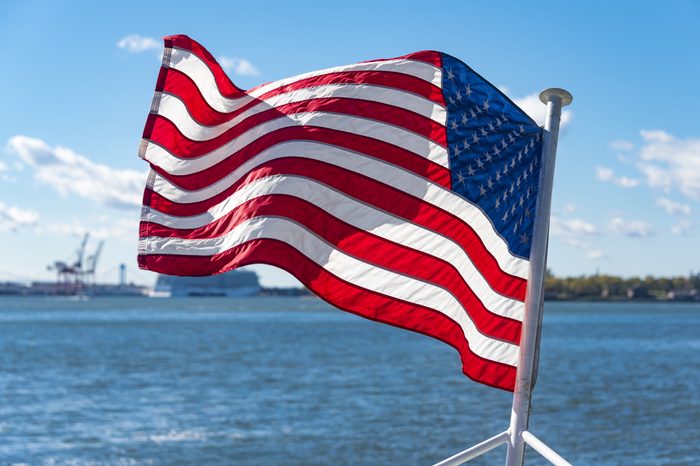
The colors are (kind of) symbolic
There is no official reason for why red, white, and blue are the colors of the American flag. That said, it’s believed the Great Seal of the United States has something to do with it. According to the American Legion, custom and tradition dictate white represents purity, red represents valor, and blue represents justice and perseverance because of Charles Thomson’s words. Thomson, the secretary of the Continental Congress, was key to the design of the Great Seal of the United States, which includes the same colors as the American flag. Thomson’s 1782 report contained a description of the colors unofficially giving them their symbolism.
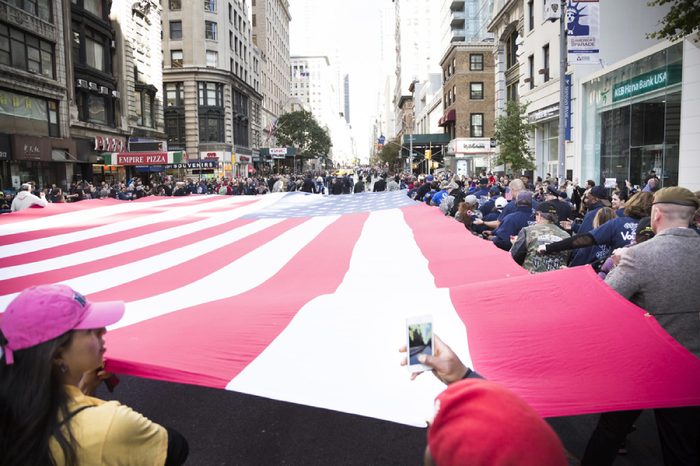
The largest American flag is called Superflag
The United States knows how to do things big—and the country doesn’t fall short when it comes to the flag. The Superflag, currently the largest American flag in the world, was also previously the world record holder for the world’s biggest flag in the Guinness Book of World Records. It weighs 3,000 pounds and requires at least 130 people to move it.
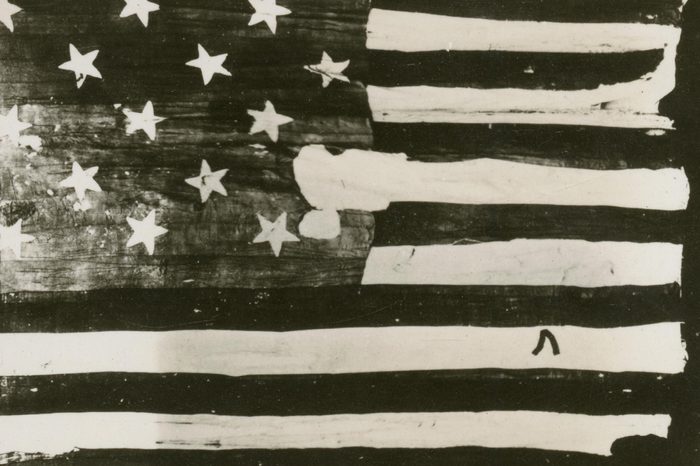
“The Star Spangled Banner” has a missing sibling
Baltimore flagmaker Mary Pickersgill was commissioned to make two flags for Fort McHenry in 1813. One would be known as “The Star Spangled Banner,” and the other would become lost. The other, smaller “storm flag” was reportedly lost in February 1815, but scholars still debate the specifics of when it was last seen, according to The National Museum of American History.
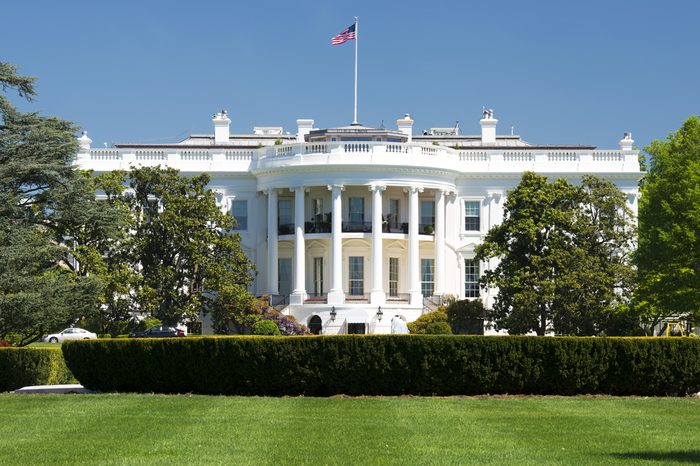
Seven places in the United States keep the flag up for 24 hours
Presidential laws and proclamations require that the flag is always on display. According to the American Flag Foundation, the places where this occurs include Fort McHenry National Monument; Flag House Square; the United States Marine Corp Memorial; on the Battle Green of the town of Lexington, Massachusetts; the White House; United States Customs Ports of Entry; and the grounds of the National Memorial Arch. Check out these 12 surprising places you’ll find the American flag.
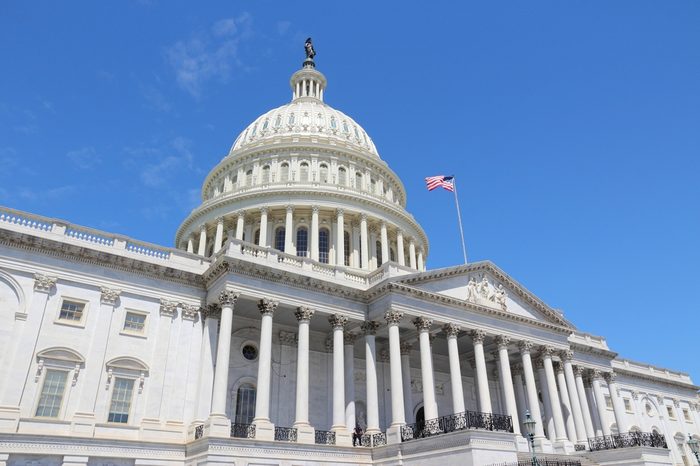
You can order a flag that has flow over the Capitol
Yes, you can own a flag that has actually flown over the United States Capitol in Washington, D.C. The website for one of your senators or representatives has a form you can fill out under “Constituent Services,” according to the American Flag Foundation. Prices vary depending on the size and fabric of the flag you want.
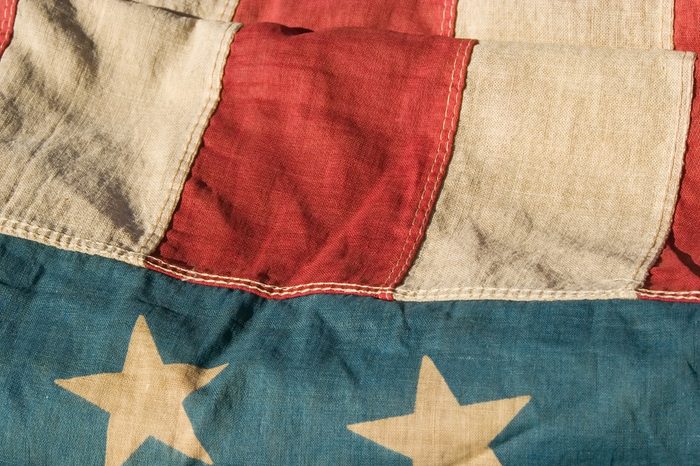
The flag nickname “Old Glory” came from a Massachusetts shipmaster
Captain William Driver started a trend when he shouted, “Old Glory!” as his flag opened for the first time back in the 1800s. According to the Smithsonian Institution, his flag initially had 24 stars before being remade with 34. Later, Driver moved to Tennessee and when the Civil War began, the flag survived—sewn hidden inside of a quilt.
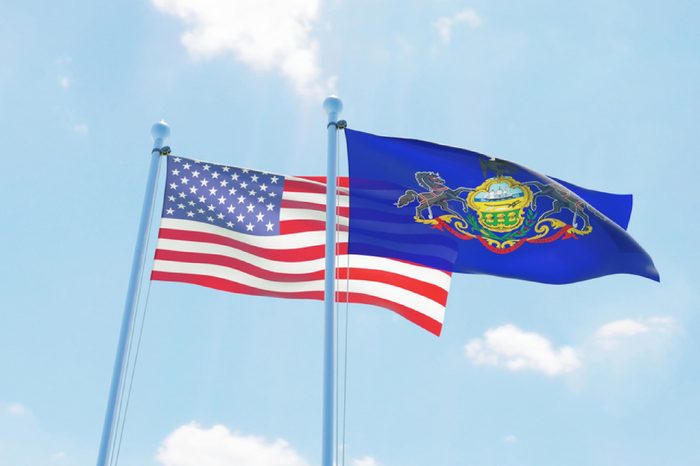
Only one state celebrates Flag Day as a state holiday
It took 16 years for Congress to officially declare June 14 Flag Day (in case you’re wondering when Flag Day is), but it isn’t a federal holiday. In fact, only Pennsylvania celebrates the day as a state holiday. Don’t miss these American flag photos guaranteed to make you feel patriotic.